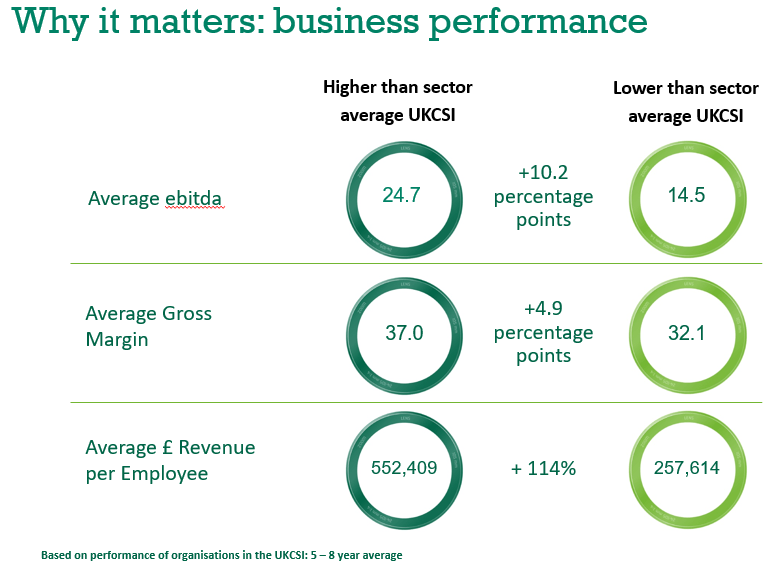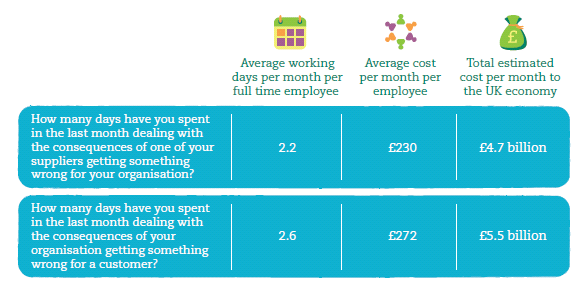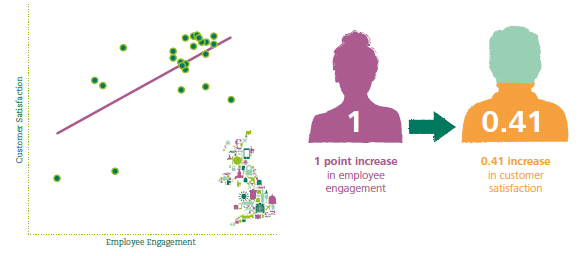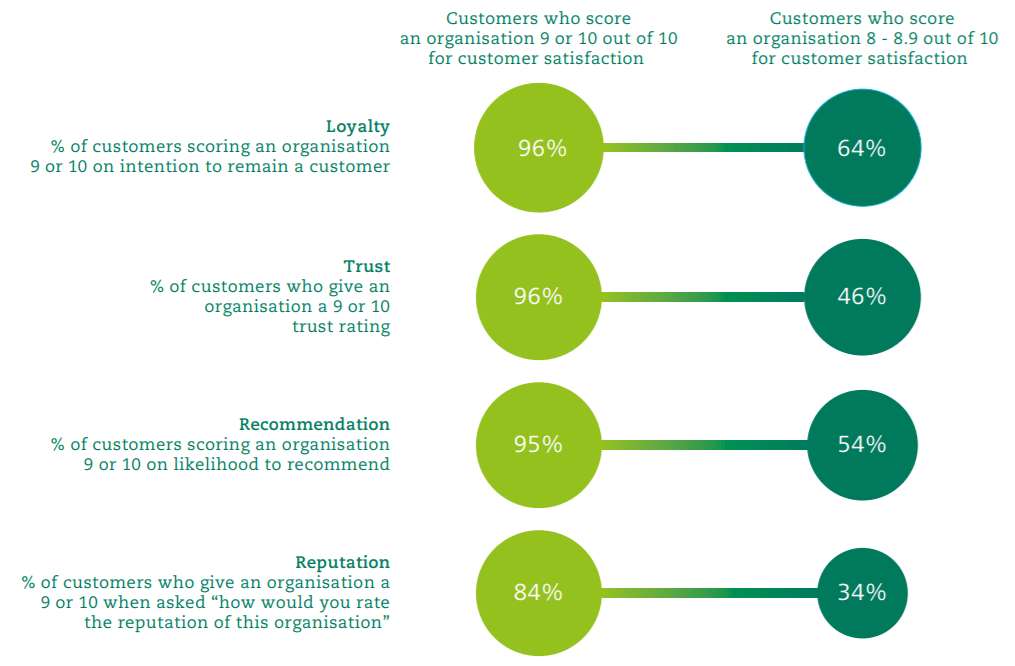At a time of acute financial challenge, organisations need to make savings and think hard before making any new investment. It can be tempting to see customer service as a cost centre – an opportunity to make savings which quickly improve bottom line results. In this climate, customer service leaders need to make compelling arguments about why customer service matters to business importance and the risks of failing to maintain focus and investment in service.
This guide is designed to help customer service leaders and professionals define, measure and articulate the return on investment of customer service.
Our evidence highlights four essential elements that demonstrate the case for the return on investment of customer service:
- Higher customer satisfaction leads to better financial results
- Reducing problems caused by service issues reduces costs
- Employee engagement is linked to higher customer satisfaction
- Customer satisfaction builds reputation and trust
1. Higher customer satisfaction leads to better financial results
Since 2008, The Institute has published the UK Customer Satisfaction Index (UKCSI), a unique customer survey which tracks the customer satisfaction performance of over 200 of the UK’s leading organisations. Our analysis of the financial performance of organisations that have appeared in the UKCSI between 2010 and 2017 shows that organisations that have maintained higher customer satisfaction than competitors in their sector have, over average, achieved higher ebitda, revenue per employee and revenue growth. Focusing on customer service doesn’t therefore just benefit customers; more often than not it leads to stronger and sustainable financial performance.
From The Customer Service Dividend, Institute of Customer Service (2017)
2. Reducing problems caused by service issues reduces costs
Employees and managers in full-time permanent roles spend, on average, 2.6 days per month dealing with the consequences of their organisation getting something wrong for a customer and 2.2 days per month dealing with issues caused by suppliers. These “hidden costs” which demand employees’ time and focus amount to a £10.2 billion per month across the UK economy.
Productivity UK, Institute of Customer Service (2018)
Some business stakeholders see customer service as essentially a cost to the organisation that can be cut without adversely impacting the bottom line. However our research suggests that reducing service capacity carries a high risk of increasing costs and damaging productivity. Organisations therefore need to think through the implications of cuts in service capability not just on customer satisfaction but on cost and productivity.
3. Employee engagement is linked to higher customer satisfaction
Our research based on 22 organisations who have either shared their employee engagement index results with us or published them in annual reports and financial statements shows that organisations with the highest levels of employee engagement tend also to achieve superior customer satisfaction. Our analysis suggests that a one point improvement in employee engagement is linked to 0.41 uplift in customer satisfaction.
UK Customer Satisfaction Index January 2018
Employee engagement is crucial to business performance because it leads to better customer experiences, greater consistency of performance, new ideas and innovation and improved retention of employees. Engaged employees are much more likely to demonstrate empathy and a personal connection with customers and deal with issues “in the moment”. Engaged employees are more likely to help colleagues solve problems and generate new ideas that improve customer experience and save money. In a crisis situation, engaged employees are the most likely to go to the extra mile to help customers or step up to adapt to new responsibilities.
The relationship between employee engagement and customer satisfaction is a virtuous cycle: high levels of employee engagement contributes to better customer satisfaction; organisations with a reputation for customer satisfaction are more likely to attract the most skilled, motivated and engaged employees.
4. Customer satisfaction builds reputation and trust
High levels of customer satisfaction builds trust and reputation. In particular, customers who score a 9 or 10 for customer satisfaction demonstrate are much more likely even than those scoring an 8 our of 10, to give the highest ratings of trust, reputation, and loyalty.
UK Customer Satisfaction Index July 2020
Trusted companies typically perform 5% better than their sector (Edelman Trust Barometer 2020). 80% of a business’s value now comes from intangible assets such as brand, compared to 20% 40 years ago. (Financial Reporting Council, Corporate culture and the Role of Boards, 2016).
Customers’ willingness to accept new technologies or products and services depends on their confidence on organisations’ competence and integrity. Trust is integral to efficient and productive relationships with suppliers, partners stakeholders and regulators. Failure to earn customers’ trust risks increasing pressure for regulation and legislation which could increase costs and even inhibit innovation.
? For more tips on this see Making the case for customer service in your organisation







